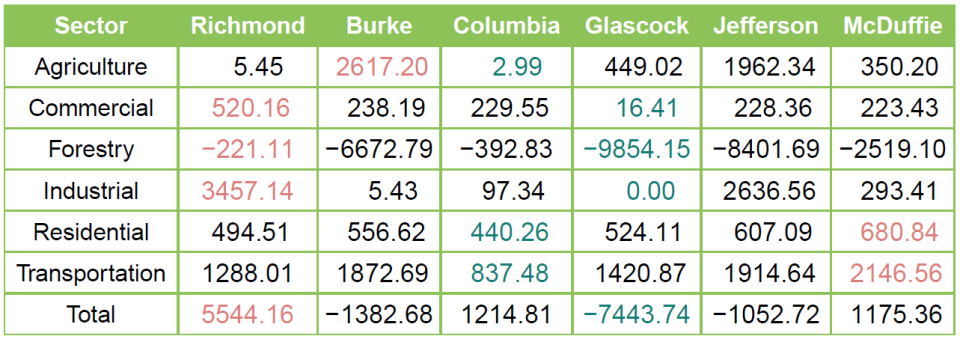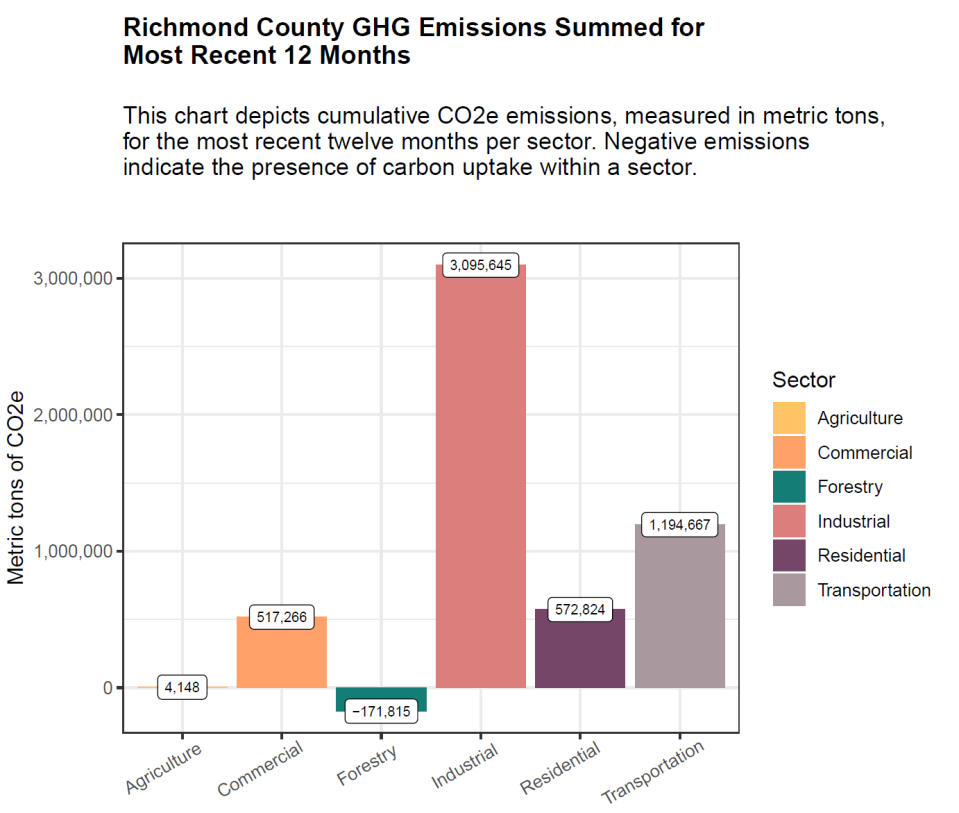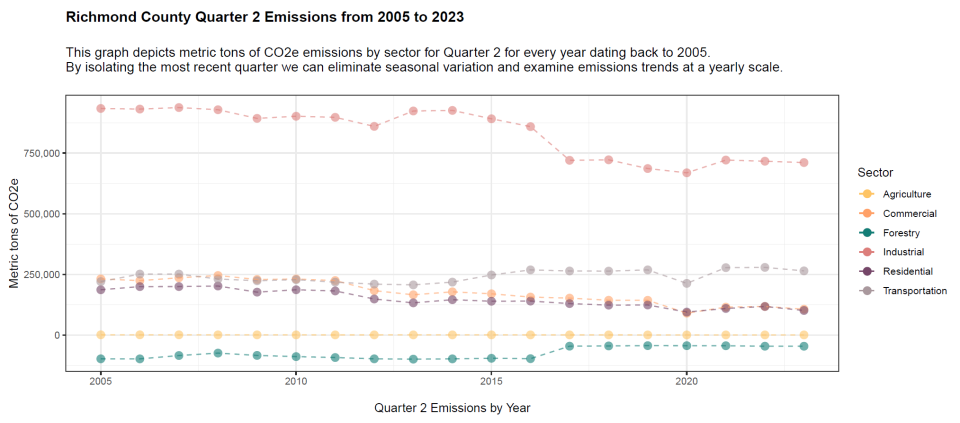Data shows greenhouse gas emissions in Augusta on par with similar cities, but still a cause for concern
The recent release of data from a Georgia environmental group dedicated to lowering carbon use in the state helped show the scale of the problem in the Augusta area.
Drawdown Georgia, a statewide initiative that issues quarterly greenhouse emissions data per county, has some experts saying that Richmond County's numbers show some cause for concern, but it's not out of step with similar metropolitan areas.
"I don’t think the Richmond County numbers are particularly worse or better compared to counties with similar middle-tier cities like Augusta," said William Drummond, an associate professor specializing in climate change planning and geographic information systems with the Georgia Institute of Technology. "But I do think that everyone should be concerned since we need to take action now to do our best to protect our children and grandchildren from the worst effects of climate change."
The table below compares the county's emissions from the previous quarter with its five nearest neighbor counties. The numbers represent metric tons of CO2e per 1,000 persons. The worst emissions levels per sector are denoted in pink, while the best emissions levels per county are denoted in teal.

Drummond said the Drawdown Georgia By the Numbers data is a straightforward way of looking at the emissions.
“There are a number of different greenhouse gasses,” said Drummond. “The two most important are CO2 (carbon dioxide) and methane. “Methane comes from landfills and oil and gas wells. When gas escapes from pipelines, it’s basically the natural gas that we use to heat our houses. Methane pound for pound is a more potent greenhouse gas that has a bigger effect ... than CO2.
“When there's a pound or a metric ton of methane, we multiply by 28 because it's 28 times more potent in terms of warming the atmosphere.”

What we know
Drummond said there are other greenhouse gases, but methane and CO2 are the big two.
“Co2e is the way that we combine different greenhouse gases so that we can do basic accounting in the same units,” said Drummond. “The two major reasons we do inventories are if we want to fight climate change greenhouse gas emissions we need to know what is causing climate change. Scientists conclude with very high confidence that greenhouse gases are the major factor in global warming.”

Richmond County greenhouse gas emissions over 12 months by sector
Industrial: 3,095,645 metric tons of cumulative CO2e emissions
Transportation: 1,194,667 metric tons of cumulative CO2e emissions
Residential: 572,824 metric tons of cumulative CO2e emissions
Forestry: -171,815 metric tons of cumulative CO2e emissions

What can be done?
Protect and plant more trees.
“Trees are a big absorber of CO2 out of the atmosphere,” said Drummond. “Roughly two-thirds of Georgia is covered by trees. In Georgia we have a high degree of CO2 uptake from forest cover. In fact, the trees in Georgia almost completely offset all our emissions from transportation. It's a very significant amount.”
Drummond says since electricity is the biggest area of impact, so generating electricity without burning fossil fuels is key.
“People and companies can do rooftop solar,” he said. “Georgia has pretty good exposure to the sun, because we're a lot closer to the equator. So we get significantly more sunlight than the northern or middle parts of the country. People can use less electricity by resetting their thermostat.”
Additional solutions
Purchase an electric vehicle, which produces significantly less pollution than traditional internal combustion vehicles.
Weatherizing your home can reduce the amount of electricity being used and save money on utility bills.
Consider replacing the way you heat your house. A heat pump basically pumps heat from outside the house into the house. And you can reverse it and it works like an air conditioner. You pump heat from inside the house outside the house.
Install electric induction stove burners that run on electricity rather than natural gas.
For more information about Drawdown Georgia, visit the website www.drawdownga.org.
For details about the quarterly emissions data by county, visit www.drawdownga.org/ghg-emissions-tracker.
This reporting content is supported by a partnership with several funders and Journalism Funding Funding Partners.
Erica Van Buren is the climate change reporter for The Augusta Chronicle, part of the USA TODAY Network. Connect with her at EVanBuren@gannett.com or on Twitter: @EricaVanBuren32.
Eco-friendly holiday shopping: Considering reducing your carbon footprint this holiday season? Here are a few tips
This article originally appeared on Augusta Chronicle: Tracking greenhouse emissions key to fight against climate change in Augusta

